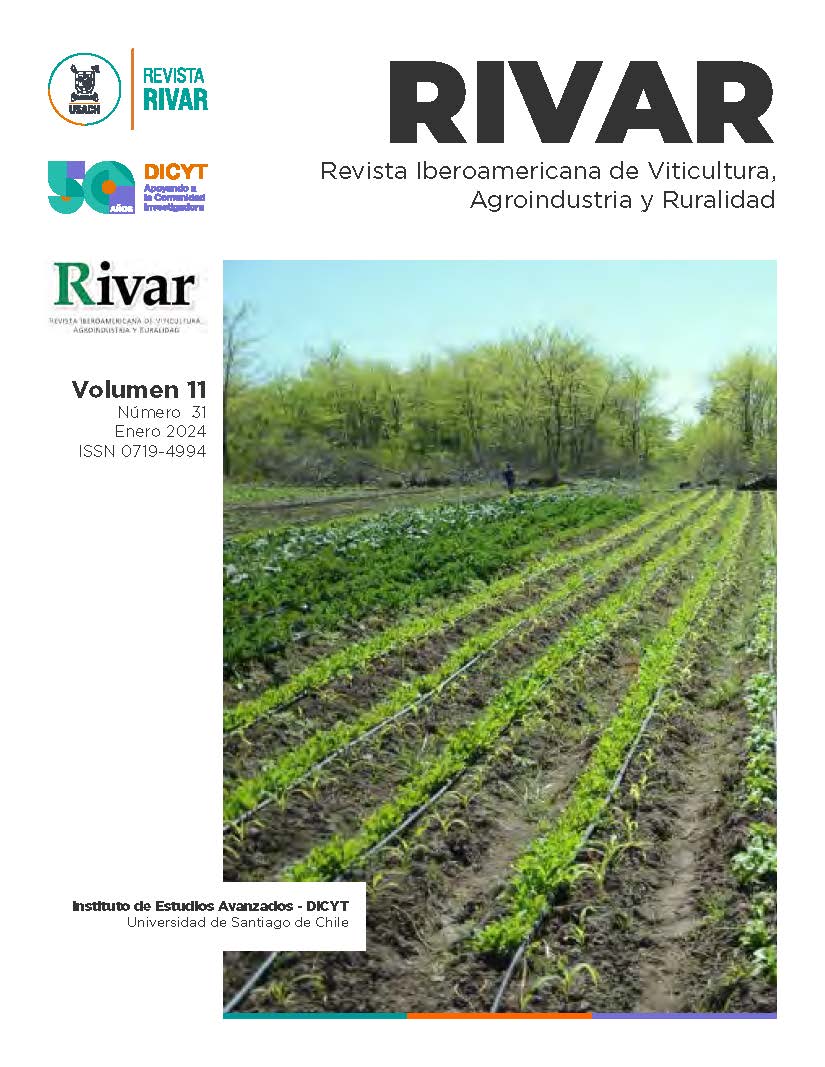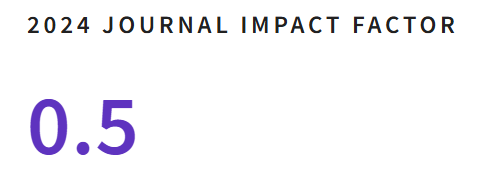Application of the Lume Method to an Agroecological Horticultural System in Córdoba, Argentina
DOI:
https://doi.org/10.35588/rivar.v10i31.6134Keywords:
horticulture, biodiversity, resilience, organizationAbstract
The Cordoba Green Belt, in Argentina, is a local food supply region that is reducing its surface area. Agroecology is established as a paradigm for the transformation of these agroecosystems, encompassing ecological, productive, social, cultural, and economic aspects. The Method of Economic-Ecological Analysis of Agroecosystems constitutes a proposal to evaluate the multiple aspects that intervene in decision-making in diversified family systems. In Córdoba, there are few studies that include the systematization of local information on horticultural production systems, which reflect diversity, productivity, and socio-economic impact in the agroecological transition process. The objective of the work was to evaluate the agroecological production unit of the Movement of Urban Farmers of Córdoba, from the Lume method. From the analysis of information, results were obtained that allowed sizing the production destined for self-consumption and the own production of inputs, and the great contribution of reciprocal relations. This allows valuing the non-monetary elements that give autonomy, identifying the limitations due to the high systemic costs of renting land and other services, and visualizing the gradual and sustained application of the principles of agroecology in a transition process.
Downloads
References
Ávila, G., Salusso, F. y Wester, O. (2020). Horticultura en la Provincia de Córdoba. Análisis de algunos aspectos coyunturales. Horticultura Argentina, 39(98), 21-34.
Barchuk, A.H.; Guzmán, M. L.; Locati, L. y Suez, L.S. (2020). Manual de buenas prácticas para diseños agroecológicos. Brujas.
Capitanelli, R. (1979). Clima. En J.B. Vázquez et al. (Eds.), Geografía física de la provincia de Córdoba (pp. 45-138) Boldt.
Castagnino AM., Díaz, K., Fernández Lozano, J., Guisolis, A., Liverotti O., Rosini, M.B. y Sasale, S. (2020). Panorama of the Argentine Horticultural Sector: 1. Characterization and Priorities of National Horticulture. Horticultura Argentina, 39(99), 76-102.
Dirección Nacional de Agroecología (DNA) (2022). Marco conceptual de la Agroecología. Secretaría de Agricultura, Ganadería y Pesca, Ministerio de Economía Argentina. https://www.argentina.gob.ar/sites/default/files/dnae_sagyp_marco_conceptual_de_la_agroecologia_.pdf
FAO (2019). FAOSTAT. Organización de las Naciones Unidas para la Agricultura y la Alimentación y Organización de las Naciones Unidas para la Agricultura y la Alimentación. https://www.fao.org/faostat/en/#home
Fernández Lozano, J. (2012). Canales de comercialización de las hortalizas frescas. En M. Mitidieri y G. Corvino (Eds.), Manual de horticultura periurbana (pp. 147-151). INTA.
Giobellina, B., Marinelli, M.V., Lobos, D., Eandi, M., Bisio, C., Butinof, M., Narmona, L. y Romero Asis, M. (2022). Producción frutihortícola en la Región Alimentaria de Córdoba. Caracterización y mapeo 2018-2020. INTA. https://repositorio.inta.gob.ar/handle/20.500.12123/11159
Iermanó, M.J. (2019). Guía metodológica para la aplicación del método Lume. Análisis económico-ecológico de agroecosistemas. INCUPO-MAELA.
INTA (2020). Planificador de Siembra Prohuerta. INTA. https://inta.gob.ar/documentos/planificador-de-siembra-prohuerta
Lanfranconi, L.E., Tuda, E.A., Buteler, M.I., Fontán, H.M., Beretta, R. y Robledo, C.W. (1987). Situación de contexto del área central bajo riego de la provincia de Córdoba. INTA, Centro Regional Córdoba.
Locati, L. (2020). Propuestas de reglamentación para la definición de zonas de resguardo ambiental y de promoción de la producción agroecológica. Córdoba, Argentina. Brujas.
Marasas, M., Blandi, M.L., Dubrovsky Berensztein, N. y Fernández, V. (2014). Transición agroecológica de sistemas convencionales de producción a sistemas de producción de base agroecológica. Características, criterios y estrategias. En S.J. Sarandón y C.C. Flores (Eds.), Agroecología: Bases teóricas para el diseño y manejo de agroecosistemas sustentables (pp. 411-436). Universidad Nacional de La Plata.
Marinelli M.V., Argüello Caro E.B., Giobellina B.L., Gianini Kurina F. y Scavuzzo C.M. (13 al 16 de octubre de 2022). Diversificación productiva y destinos de comercialización mejoran precios de venta en horticultura periurbana. En Actas de Periurbanos hacia el consenso. Segundo Encuentro Nacional y Congreso Científico. Buenos Aires, Argentina. https://periurbanoshconsenso.com.ar/
Marinelli, M.V., Argüello Caro, E.B., Petrosillo, I., Kurina, F.G., Giobellina, B.L., Scavuzzo, C.M. y Valente, D. (2023). Sustainable Food Supply by Peri-Urban Diversified Farms of the Agri-Food Region of Central Córdoba, Argentina. Land, 12(1), 101-119. https://doi.org/10.3390/land12010101
Pereda, M.M., Iermanó, M.J., Fleita, F.A., Almada, C. y Ortíz, S. (2020). Investigación- acción participativa implementando el método Lume: Evaluación de un sistema familiar agroecológico (Bella Vista, Corrientes, Argentina). Agrotecnia, 30, 40-49. http://dx.doi.org/10.30972/agr.0304655
Petersen, P., Marçal da Silveira, L., Bianconi Fernandes, G. y Gomes de Almeida, S. (2017). Método de análise econômico-ecológica de agroecossistemas. ANA y AS-PTA.
Pons, D. y Céliz, G. (2018). Escenarios de cambio climático: hacia líneas estratégicas para el cinturón verde de Córdoba. En B. Giobellina (Comp.), La alimentación de las ciudades: transformaciones territoriales y cambio climático en el Cinturón Verde de Córdoba (pp. 229-255). INTA.
Suez, L. (2020). Planificación de territorios agroecológicos. Una herramienta para el ordenamiento territorial participativo en SIG, aplicado al caso de Estación Juárez Celman. INTA.
Vigliola, M.I. (1993). Manual de horticultura. Hemisferio Sur.









